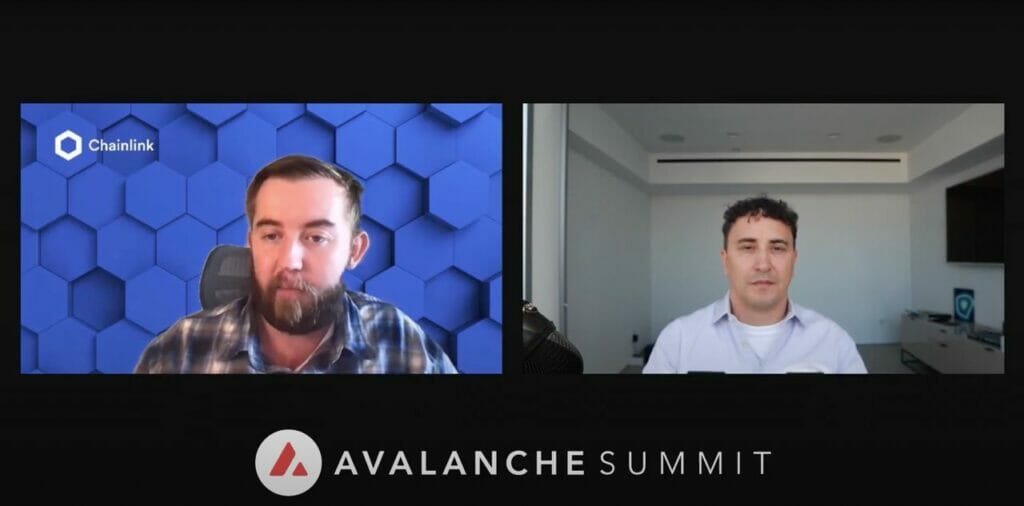During Avalanche Summit in March, Chainlink co-founder Sergey Nazarov and Emin Gün Sirer, Founder of Ava Labs (a team supporting the development of Avalanche) held a virtual conversation about how Chainlink’s industry-standard oracle network and Avalanche’s high-performance, high-capacity blockchain enable the future of web3.
Avalanche has become one of the fastest organically growing blockchain ecosystems since launching in 2020, due to its novel consensus mechanism and near-instant transaction finality. Last July, Chainlink Price Feeds went live on Avalanche mainnet, unlocking key functionalities for next-gen DeFi applications on the low-latency chain.
Nazarov and Sirer also outlined three compelling use cases accelerated by Chainlink’s oracles and decentralized services on Avalanche. Beyond DeFi, decentralized gaming and dynamic NFTs (dNFTs) rely on decentralized infrastructure like Chainlink VRF (Verifiable Random Function) for tamper-proof randomness and Chainlink Keepers for smart contract automation.

This week, Avalanche announced that both Keepers and VRF are now live on the Avalanche Primary Network, giving developers a suite of new tools to build web3 applications that achieve the speed and efficiency of web2 applications, while offering key advantages such as superior user control, transparency, global access, and yield.
At Avalanche Summit, Sirer, former associate professor of computer science at Cornell University and former co-director of the Initiative for Cryptocurrencies and Contracts (IC3), underscored the importance of VRF’s off-chain random number generation (RNG) to use cases like web3 games.
“RNG is absolutely essential to computer scientists; it seems like a boring or simple thing to non computer scientists, but it’s actually a very difficult problem,” he said. “In the blockchain space, the generation of secure random numbers is actually very difficult.”
Nazarov elaborated on how VRF will unlock a fast, exciting user experience – critical to gaming – on Avalanche. “You don’t want to wait for a poker hand,” he said. “People don’t really love waiting for that.”
Chainlink Keepers outsources the automation of time- and event-based smart contract tasks, freeing developers to build next-gen decentralized applications with enhanced user experience. Avalanche’s announcement highlighted “DEX limit order functionality, automating yield harvesting and compounding, starting or stopping blockchain games, dynamic NFTs, DAO automation, and many others” as functions of the “vast” design space unlocked by Keepers.
Sirer spoke to the potential of dNFTs in conversation with Nazarov at Avalanche Summit.
“At Avalanche, we were one of the first people to say to the world, ‘Look, NFTs are not just a bunch of pretty pictures; they’re credentials; they can play a role in the real world and they can do all sorts of exciting things,” he said.
“With the enhanced security and uptime guarantees provided by Chainlink Keepers and the scalability and cost-efficiency of Chainlink VRF v2, Avalanche developers can now continue pushing the boundaries of what’s possible in the Web3 space,” said Nazarov in an official statement.
This week, Sirer called the integration of Chainlink VRF and Keepers a “fantastic milestone” that opens a realm of new opportunities for Avalanche’s users and developers.
“The Avalanche Community is full of tireless builders, and their ability to rapidly build and ship applications at scale just became even easier.”


